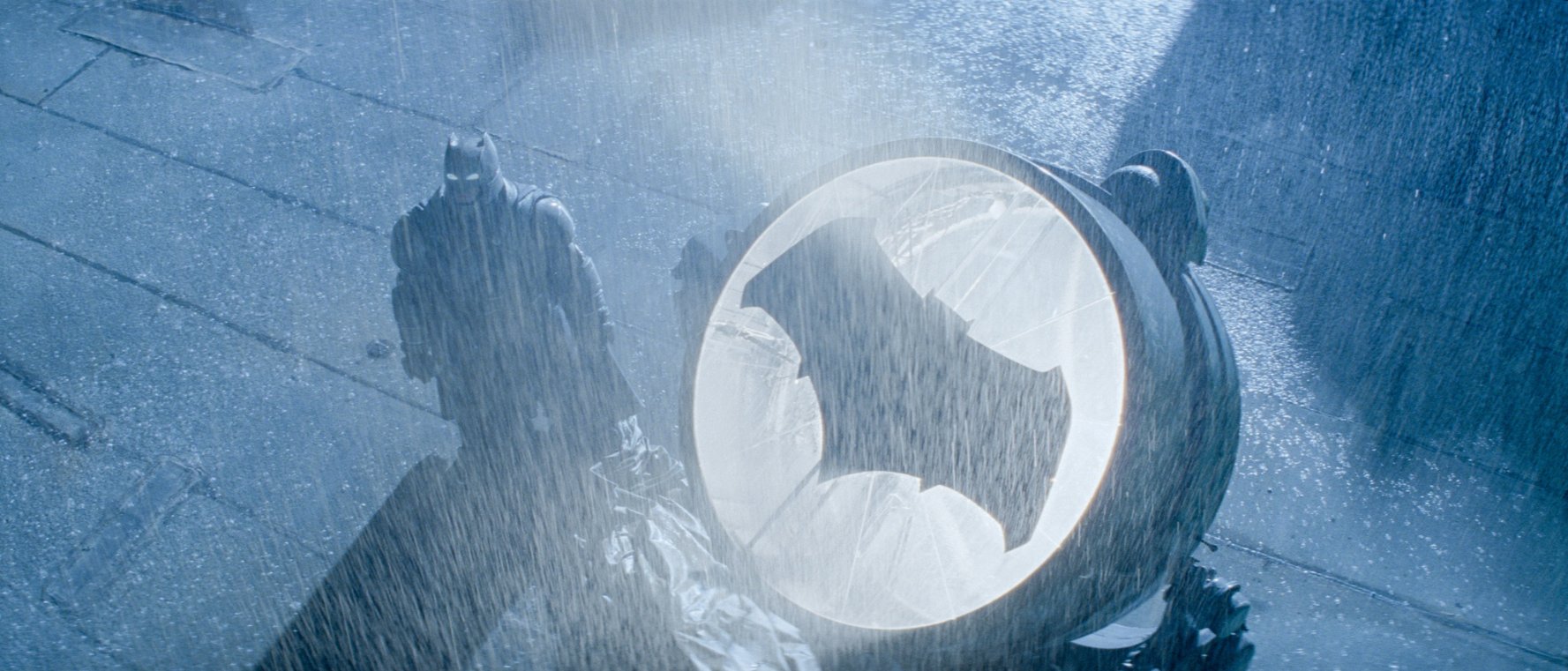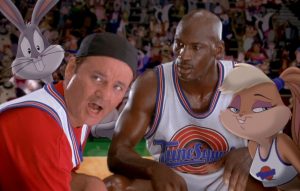Let’s face it, when it comes to the DC Universe, it’s a post-Christopher Nolan Batman world. The gauntlet was thrown down by his trilogy, particularly the second and third films that grossed over $1,000,000,000 each. Ignoring the fact that this is the only live-action Batman film series that “adolescent” audiences have ever been exposed to (Nolan’s Batman debuted eight years after Joel Schumacher’s 1997 film Batman & Robin starring George Clooney as the Caped Crusader), The Dark Knight Trilogy was incredibly well received by mainstream moviegoers as well as diehard fans of the Batman comic books. At least a large majority of the fanbase actively praised this gritty, dour interpretation that matched the tone and many plot points from the comics of the late 1990’s and early 2000’s.
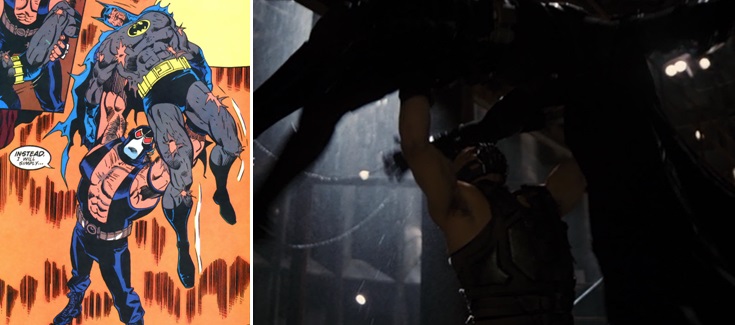
Panel from Batman #493 vs. a still from The Dark Knight Rises (Photo Credit: batman-online.com)
After the neat, beloved end of the neoprene black, trained-by-ninjas, Batman, it seemed the franchise was over, for good. Nolan’s creation became true canon in the public eye. Noting that The Dark Knight ranks fourth on the IMDb top 250 films (with the The Dark Knight Rises ranking in at a still impressive 62nd place) certainly has not helped DC find greatness with its seemingly stunted revival attempt in Batman v Superman and more recently, this summer’s Suicide Squad. As the Georgetown Voice, and many other critics have previously stated, the initial attempts at a new cinematic universe suffer greatly from sheer plot incoherence. Both attempts tend to sacrifice plot continuity for sporadic, yet sometimes visually impressive scenes of sensory overload. On the surface, the films look like unnecessary failures. Somewhere in the second act of Suicide Squad it seemed like some production assistant accidentally deleted 30 minutes of film that would have made us understand why the film’s main conflict even existed. However, glancing at the history of DC, its positives and pitfalls, and where these films draw influence shows that the glaring mishaps might just be growing pains transitioning from the hero that fans remember to a new franchise rooted in the original comics.
Christian Bale’s Batman is not easy to come back from, especially when actively trying to avoid being derivative. Although currently held in disdain, Ben Affleck’s depiction is certainly not the “worst” received attempt. Christopher Nolan’s new take on the character came in response to the objectively least successful attempt at the Dark Knight, 1997’s Batman & Robin. Joel Schumacher directs this absurd tale with George Clooney and Chris O’Donnel (Robin) sporting cod pieces and protruding nipple guards to stop Mr. Freeze (Arnold Schwarzenegger). Many bad punchlines, and more neon lights than a roller disco led to the franchise’s worst box office reception.
This overtly whimsical film, which clawed for humor by playing heavily on Batman’s innately homoerotic subtext, was disliked by critics and fans alike. The corny jokes, the cheap sets, and shallow characters that held no base in the Batman canon other than what felt like the preconceived notions of outsiders made the movie difficult to watch. It put a moratorium on many elements that belong in the Batman universe – by virtue of using them so terribly.
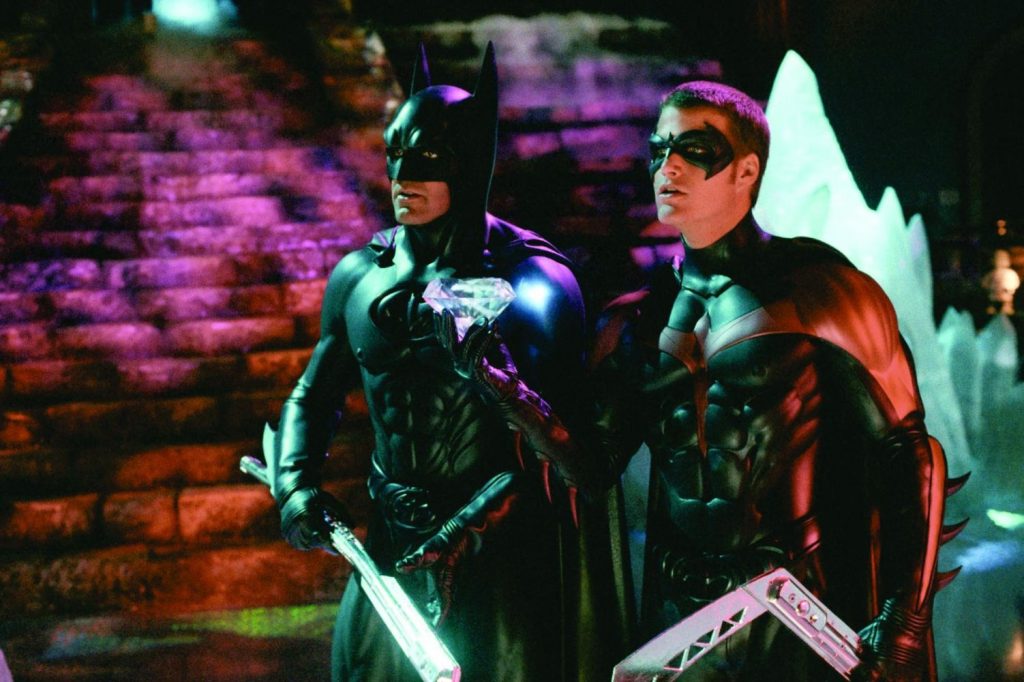
IMDb
The plot incoherence of Batman v. Superman and Suicide Squad was to an extent unnecessary given the vast amount of solid material to draw from, albeit somewhat understandable given the series’ history on the big screen. Hitting the reset button is not easy while tiptoeing between the Nolan and Schumacher legacies. The new franchise, nevertheless seems to be slowly reintroducing some pre-Dark Knight Trilogy themes into the narrative, slowly weening fans off of Bale’s gruff voice and hyper-seriousness into what may be something truer to the the larger, 20th century Dark Knight legacy.
Snyder’s adaptation slowly moves away from the realism of the previous trilogy. In set pieces alone, he shows a new, sleeker Batmobile and Gotham city filled with eerie bright lights, graffiti, and crime, a large difference from the Batman seen punching out released cons in an unchanged Chicago or Wall Street. Additionally, the realism fades with an increased emphasis on humor, Batman, even in full garb, can joke with Superman about where the hell Wonder Woman came from. A willingness to joke, particularly with some corny comicbookesque one liners, is used in a tactful way that Batmen of years past seemed unable to do (i.e. Val Kilmer’s “It’s the car right? Chicks love the car” heard in 1995’s Batman Forever).
Absurdity is crucial to the Batman mythos and always has been. Since the early days there have been sequences of Batman travelling through time such as where he hunts Jack the Ripper in Gotham by Gaslight. And one cannot forget the insanity of Detective Comics #475 in which the Joker poisons all the fish in Gotham giving them faces that resemble his and make people act insane if they eat them. Audiences must believe that outlandish characters (Catwoman, The Riddler) and fake cities, like Metropolis and Gotham are real. Superman and Wonderwoman have somewhat of an excuse for their costumes as they are technically aliens, but Batman (and the villains of Gotham) must be “real” people in these “real” cities who elect to wear these costumes and behave a certain way. It is not easy then to understand that the most realistic Batman series was the most successful, one where a man wore clown makeup simply because he was a homicidal lunatic or Robin comes to be, only by allusion, because it was the birth name that he had since changed.
Batman v. Superman is embracing the absurd. Fight scenes become more like screen grabs from the pages of comic books, moments of impact slowed as if they were the precise moments an illustrator chose to emphasize what was going on. I encourage you to watch Joel Schumacher’s fight scenes in comparison. One can easily see how one looks like people in plastic and makeup running circles around one another and the other is believable. Most serious lines of Batman v. Superman follow suit as Ben Affleck dramatically stares down Henry Cavill’s Superman asking, stating, as if written by Frank Miller himself, “Tell me do you bleed? You will.”
Embracing the unrealistic becomes necessary to turn the DC Universe into an expanding franchise. Stern stories of a lone rogue wandering his city stopping crime, no matter the scale, can only go so far. Affleck’s Batman spends a lot more time without his costume, and shows a lot more depth and breadth when it comes to decision making, morality and interpersonal relationships. Bale’s Bruce Wayne was constantly presented as a billionaire playboy facade to permit him to go about as he pleased each night whereas the new film shows a greater congruence with how Wayne acts with and without the mask.
The absurd world does not have to mean unrealistic characters. To leave Batman alone for a moment, Superman’s interaction with an equal in power that was not totally evil finally showed some truth and fallibility within his character. Instead of the virtuous and unstoppable force of nature that can defeat nearly anything without even shaking the gel in his hair, audiences see vulnerability and conflicting interests. The clash of titans style fighting was gritty and filled with malice. Viewers saw what seemed like the two oath-holding pillars of justice do everything to cause each other pain. The fights were choreographed to emphasize the bone-breaking intensity of the 90’s and 2000’s era comics over an easy knockout or a seemingly harmless crash through a few walls. Additionally, Batman has become more violent. He is old and tired and filled with concerns. His desire for pristine justice fades in order to carry out what is practical, and the fight scene shows it as he brutally kills and brands criminals. Let the record show that he is not the first Batman to kill people. Michael Keaton essentially killed Jack Nicholson’s Joker in Batman (1989) and the Caped Crusader carried a gun in many early comics; this changed due to the protest of morality movements of the early mid-20th century.
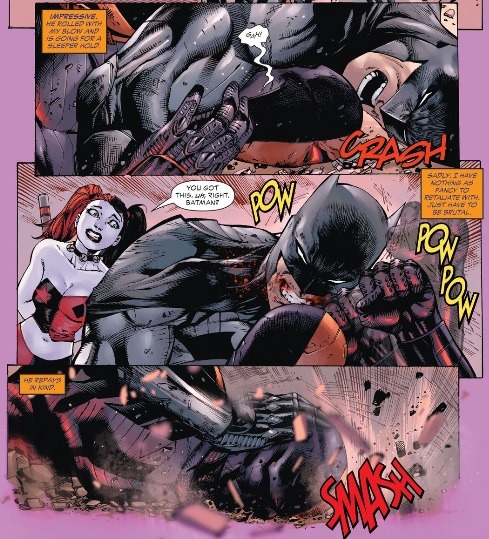
Tony S. Daniel and Sandu Florea
Admittedly, this interesting shift was not entirely obvious from Batman v. Superman alone. This summer’s Suicide Squad really drove these points home. Batman appeared more like a classic, serialized detective stopping supervillains. Most notable were the scenes with Jared Leto’s Joker showing off the dynamic, neon underbelly of Gotham, fit with his own personal Joker car and a nightclub that perfectly matched the Gotham aesthetic. Oh and one-liners galore.
Yes, the plots were a rush job of introductions in an attempt to play a wild game of catch up with Marvel’s Avengers series, but they came with the promise of a DC universe without a need to be tied down to practically and a morose tone. Now that everyone is well acquainted, these superhero films can finally be superhero films. I have high hopes for DC’s future, and they seem to have some ambitious faith in themselves as well (see the chart below courtesy of Comic Alliance).
The film production teams are handling some seriously valuable material, and a look to the past may just be what they need to build something incredible on the base they have established.



